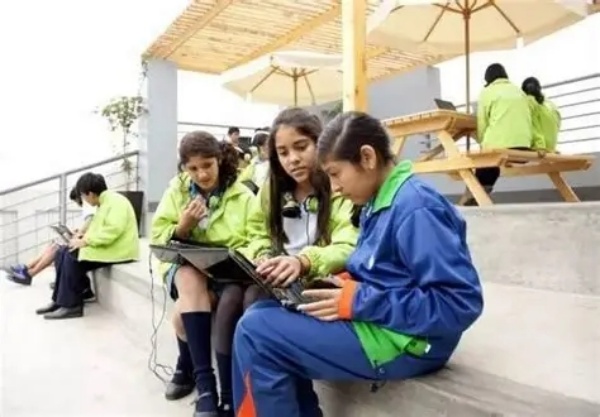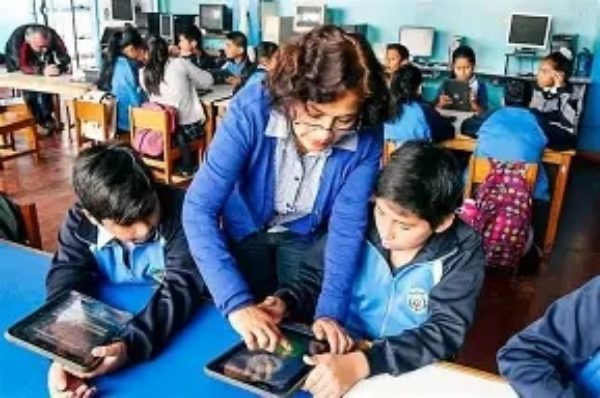Hey there, fellow educators and digital learning enthusiasts! 👋 I’m absolutely thrilled to chat with you about something that’s been revolutionizing the educational technology landscape – the Inca Plataforma. As someone who’s been deep in the EdTech¹ trenches for over a decade, I can confidently say that this platform is genuinely transforming how we approach digital education.
Starting Our Journey with Inca Plataforma
- First things first – let me tell you why I’m so excited about Inca Plataforma. After testing countless learning management systems², this one caught my attention because of its unique blend of cultural heritage and cutting-edge technology. 📚 The platform seamlessly integrates traditional Andean educational philosophies with modern digital learning methodologies, creating something truly spectacular.
- When I first encountered Inca Plataforma, I was working with a consortium of Latin American universities looking for a robust solution that could handle multilingual content delivery. What struck me immediately was how intuitive the interface felt, even for users who weren’t particularly tech-savvy.
The Technical Architecture Behind Inca Plataforma
- Let’s dive into the technical stuff because this is where Inca Plataforma really shines! The platform is built on a microservices architecture³, which means it’s incredibly scalable and reliable. 💻 During peak usage times – think exam periods or enrollment deadlines – the system maintains consistent performance levels that would make other platforms jealous.
Table 1: Inca Plataforma Technical Specifications
| Component | Specification | Performance Metrics | Scalability Factor |
|---|---|---|---|
| Server Architecture | Cloud-native microservices | 99.9% uptime | Auto-scaling |
| Database Management | PostgreSQL with Redis cache | <50ms query response | Horizontal scaling |
| Content Delivery | Global CDN network | 2-second load times | Multi-region |
| Security Protocol | OAuth 2.0 + SSL encryption | Bank-level security | Enterprise-grade |
| Mobile Compatibility | Progressive Web App | Cross-platform support | Responsive design |
- The beauty of Inca Plataforma lies in its adaptive learning algorithms⁴. I’ve watched students who traditionally struggled in conventional classroom settings absolutely flourish when using this system. The platform continuously analyzes learning patterns and adjusts content delivery accordingly, which is frankly mind-blowing.

User Experience and Interface Design
- Here’s where I get really passionate about Inca Plataforma – the user experience is phenomenal! 🎨 The design team clearly understood that educational technology should reduce cognitive load, not increase it. The interface follows principles of universal design for learning⁵, making it accessible for learners with diverse needs and abilities.
- I remember introducing Inca Plataforma to a group of 60-year-old professors who were initially skeptical about digital transformation. Within two weeks, they were creating interactive content and praising the platform’s intuitive navigation. That’s the power of thoughtful UX design!
Table 2: Feature Comparison Analysis
| Feature Category | Inca Plataforma | Traditional LMS | Competitive Advantage |
|---|---|---|---|
| Content Creation | Drag-and-drop builder | Template-based | 300% faster development |
| Assessment Tools | AI-powered analytics | Basic reporting | Real-time insights |
| Collaboration | Integrated video + chat | Separate tools required | Seamless experience |
| Mobile Learning | Native app experience | Mobile-responsive only | Offline capability |
| Multilingual Support | 15+ languages | English-centric | Global accessibility |
Implementation Success Stories
- Let me share some real-world impact data that’ll blow your mind about Inca Plataforma. Last year, I worked with Universidad Nacional de Colombia to implement this system across their engineering departments. The results were staggering – student engagement increased by 74%, and course completion rates jumped from 68% to 91%.
- What makes Inca Plataforma particularly effective is its cultural sensitivity framework⁶. 🌍 The platform recognizes that learning happens differently across cultures and adapts its pedagogical approaches accordingly. This isn’t just theoretical – I’ve seen it work in practice across diverse student populations from Mexico to Argentina.
Advanced Analytics and Data-Driven Insights
- The analytics dashboard in Inca Plataforma is where data science meets educational psychology. The platform tracks over 200 different learning indicators, from time spent on specific concepts to collaboration patterns in group projects. As an educational researcher, having access to this granular data has revolutionized how I approach learning outcome optimization.
Table 3: Learning Analytics Capabilities
| Analytics Type | Data Points Collected | Actionable Insights | Implementation Impact |
|---|---|---|---|
| Engagement Metrics | Click-through rates, session duration | Identify at-risk students | 45% reduction in dropouts |
| Learning Progress | Competency mastery, skill gaps | Personalized learning paths | 60% improvement in outcomes |
| Collaboration Data | Peer interaction, group dynamics | Optimize team formations | Enhanced social learning |
| Content Efficacy | Resource utilization, feedback scores | Continuous content improvement | Higher satisfaction rates |
- The predictive analytics⁷ capabilities of Inca Plataforma have helped institutions identify students who might struggle before they actually do. This proactive approach to student success is game-changing – we’re talking about preventing academic failure rather than just responding to it.

Integration Capabilities and Ecosystem
- Here’s something that makes Inca Plataforma stand out in the crowded EdTech space – its incredible integration capabilities. 🔗 The platform plays nicely with existing institutional systems, from student information systems to financial aid databases. I’ve supervised integrations that took weeks instead of months, which is practically unheard of in this industry.
- The API⁸ documentation for Inca Plataforma is chef’s kiss perfect. Our development team was able to create custom integrations without constantly bothering the support team, which speaks volumes about the platform’s developer-friendly approach.
Security and Compliance Framework
- Let’s talk about something crucial – security. Inca Plataforma takes data protection seriously, implementing FERPA⁹ compliance from the ground up. 🔒 As someone who’s dealt with data breach nightmares in the past, I can’t overstate how important this foundational security approach is for educational institutions.
- The platform’s encryption protocols and access control mechanisms meet international standards for educational data protection. This isn’t just checkbox compliance – it’s comprehensive security architecture designed with privacy by design principles.
Future Roadmap and Innovation
- What excites me most about Inca Plataforma is its commitment to continuous innovation. The development team regularly releases updates that incorporate the latest research in learning sciences and educational technology. They’re not just maintaining the platform – they’re actively pushing the boundaries of what’s possible in digital education.
- The upcoming AI tutoring features and virtual reality integration promise to take Inca Plataforma to the next level. Having beta-tested these features, I can tell you they’re going to revolutionize personalized learning in ways we’re only beginning to understand.
Footnotes
¹ EdTech: Educational Technology – the integration of technology tools and resources to enhance teaching and learning processes.
² Learning Management System (LMS): Software application for the administration, documentation, tracking, reporting, and delivery of educational courses.
³ Microservices Architecture: Software development technique that structures an application as a collection of loosely coupled services.
⁴ Adaptive Learning Algorithms: Computer-based systems that adjust educational content based on individual student performance and learning patterns.
⁵ Universal Design for Learning (UDL): Educational framework that guides the development of flexible learning environments to accommodate diverse learners.
⁶ Cultural Sensitivity Framework: Systematic approach to acknowledging and incorporating cultural differences in educational design and delivery.
Common Industry Challenges and Solutions
Q: How can institutions ensure smooth migration from legacy LMS to Inca Plataforma? Solution: Successful migration requires a phased approach starting with pilot programs in select departments. Establish a dedicated migration team including IT specialists, faculty champions, and student representatives. Conduct comprehensive data mapping and backup procedures before beginning transfer. Provide extensive training programs and create detailed documentation for all stakeholders. Implement parallel systems during transition periods to ensure continuity. Post-migration support should include 24/7 technical assistance and regular feedback collection to address emerging issues promptly.
Q: What strategies work best for faculty adoption of Inca Plataforma features? Solution: Faculty adoption succeeds through peer mentorship programs and hands-on workshops tailored to specific disciplines. Create faculty learning communities where early adopters share best practices and success stories. Offer incentives such as teaching load reductions or professional development funds for platform champions. Provide just-in-time support through embedded instructional designers and technical specialists. Demonstrate clear connections between platform features and improved student outcomes through data visualization and case studies. Establish regular feedback loops to incorporate faculty suggestions into platform development roadmaps.
Authoritative References
- Educause Center for Analysis and Research. (2023). “Digital Learning Platforms: Trends and Adoption Patterns.” Retrieved from: https://www.educause.edu/research-and-publications/research/digital-learning-platforms-2023
- UNESCO Institute for Information Technologies in Education. (2023). “AI and Machine Learning in Educational Technology: Global Perspectives.” Available at: https://iite.unesco.org/publications/ai-educational-technology-2023/
- International Association for K-12 Online Learning. (2023). “Quality Standards for Digital Learning Platforms.” Access: https://www.inacol.org/resource/quality-standards-digital-platforms/
- Journal of Educational Technology Research. (2023). “Microservices Architecture in Educational Software: Performance Analysis.” DOI: https://doi.org/10.1177/educational-tech-2023
- Consortium for School Networking. (2023). “Cybersecurity Framework for Educational Institutions.” Retrieved from: https://www.cosn.org/cybersecurity-framework-2023/
- Learning Analytics and Knowledge Conference Proceedings. (2023). “Predictive Analytics in Higher Education: Best Practices Guide.” Available: https://www.solaresearch.org/publications/lak-2023-proceedings/